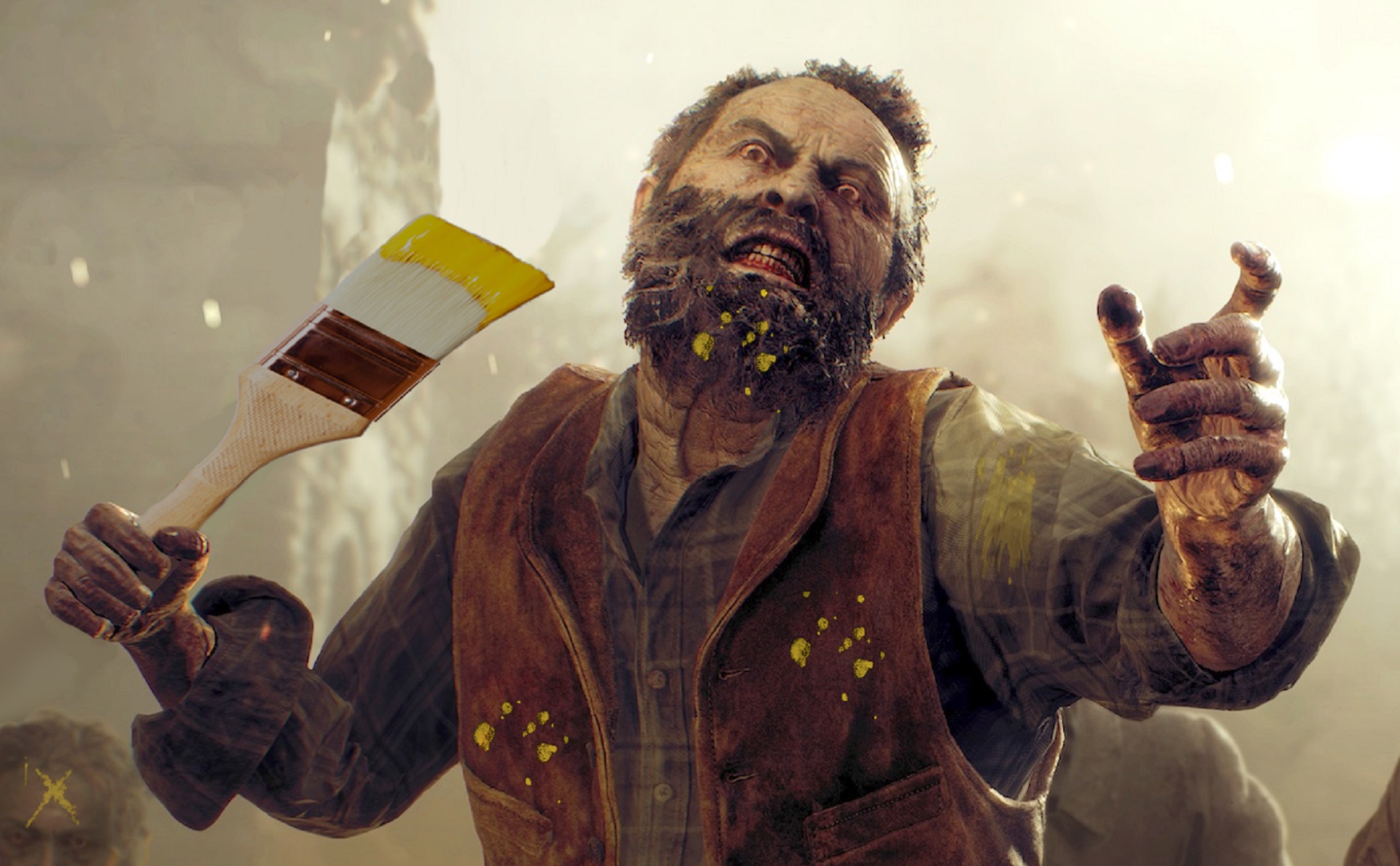
Devs as well as gamers are once more going back-and-forth on the yellow paint that Resident Evil 4 Remake makes use of to highlight ecological components like climbable ladders as well as lootable barrels.
This isn’t the first or even second time this certain style option has actually triggered dispute, yet the disagreements as well as narratives originating from the most up to date conversation are most likely the most effective ones yet. Here’s wishing we can lastly place this to bed.
The, for absence of a far better word, Gamer Take stays practically unmodified: utilizing yellow paint to highlight things is “unnecessary,” a disrespect to the gamer’s knowledge, ostentatious, immersion-breaking, inelegant, as well as consequently this sort of aesthetic filter ought to be optional instead of baked right into the game.
I can a minimum of see the disagreement for making this kind of point a visual setup, so because, as supporter Steven Spohn points out, it’s a substantial ease of access win – though as I’ve claimed previously, individuals that would certainly disable this setup are entitled to the irritation that’s concerning them. But the concept that it makes games much less immersive liquifies under also the mildest analysis.
The actions from designers have actually been numerous as well as differed, generally concentrating on the risks of sensible graphics as well as the truths of playtest comments. “As environments get more detailed and realistic, materials get more complex and noisy, etc, it becomes increasingly difficult to direct players in unobtrusive ways,” argues Dusk as well as Iron Lung designer David Szymanski. “And generally developers err on the side of caution when it comes to keeping players from getting stuck.”
“The largest reason this kind of condescending telegraphing is necessary is the ridiculous amount of visual noise we’ve allowed into our environment design due to chasing ‘realism’ and using bad design processes for 15 years,” echoes game style associate teacher Ty Underwood.
In a prolonged thread, Boss Fight innovative supervisor Damion Schubert says that “art directors all wish this guy was correct” as well as ecological quality truly was that very easy, yet sadly, “the push towards more realistic art increases the need for more unrealistic visual cues.”
“This is one of those counterintuitive cases where realism is less immersive,” Schubert includes. “Immersion is not a measure of how realistic the grass looks, it’s a measure of how much you are into flow of the experience. And while hot shit art can be a factor, game readability trumps it … The things that break immersion are the things that break your flow in a game, usually because you know what you need to do but can’t figure out how to interact with the game to do it.”
Bringing us back to the barrels as well as ladders, Schubert claims: “Trying to open 30 doors to find one we can go through breaks immersion, because the tedium of the experience calls attention to the faults of the simulation.” A spray of yellow paint conserves Leon Kennedy some beneficial time as well as maintains him concentrated on right stuff that’s really immersive, simply put.
The Division musician Palle Hoffstein jokes that he as soon as really felt “we don’t need the signs and breadcrumbs. Players aren’t stupid. Let them explore.” But all it took was some playtesting for him to take a look at ecological highlights as well as state “put it back and let’s never speak of this again.”
“I promise the yellow paint was added in after a dev was forced to watch in silence as a playtester got stuck for 20 minutes looking for a way up,” says Joseph Hunter, lead programmer of Sucker for Love as well as Chromatose.
Fully sustaining the yellow paint, Ben Myres of workshop Nyamakop restores a legendary image taken years earlier as he enjoyed event-goers play with an online demonstration of the challenge game Semblance: “This is the face of a designer watching someone playtest their game after deciding NOT to put yellow paint on their ladders.”
Inner voices designer Pedro Braga shared a shopping list of “things that seemed obvious to me but weren’t during playtests,” consisting of:
- “In a platformer, players would assume you had to go to the right and kept jumping in the void over and over. I had to add a revolving staircase that spins you and makes you face left.”
- “When players got to a village, they wouldn’t interact with any of the houses. So I added a giant exclamation point in one of them.”
- “Players won’t pick up a necessary item even though it’s on a pedestal… So I make it [floating and glowing] instead.”
- “It doesn’t matter what the vibe of the game is, people always try to beat the shit out of everyone they meet. Blocking the attack button would be too handhold-y, so I add a disapproving response from the NPC. Then players are like ‘oh i’m so sorry.'”
- “I have [to make] holes impossible to jump through twice as large otherwise people will be trying to make the jump for hours and get bored of the game.”
Fortunately, elderly narrative developer Keano Raubun has actually addressed the dispute finally with what I assume we can all concur is Peak Environmental Signposting.
Dark Souls with traditional Resident Evil cam angles is too cursed even for its creator.
Source: gamesradar.com


